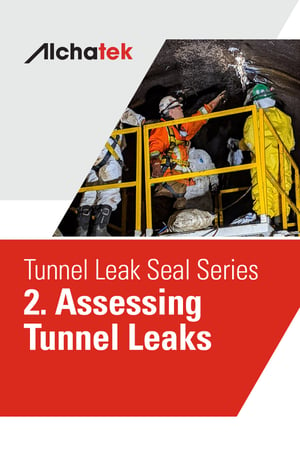
 The first step in addressing the issue of water leaks in tunnels is accurate diagnosis. Without a proper understanding of the problem's scope and severity, any intervention risks being ineffective or even counterproductive. By focusing on the common signs of water leaks in tunnels as well as the tools and techniques available for leak detection, civil engineers, tunnel maintenance teams, and infrastructure managers can make informed decisions about how to proceed. Armed with knowledge of the signs of leaks and detection methods, they can determine the size and location of leaks and decide on appropriate repair strategies. Careful diagnosis allows infrastructure caretakers to tackle water infiltration in a strategic, cost-effective manner.
The first step in addressing the issue of water leaks in tunnels is accurate diagnosis. Without a proper understanding of the problem's scope and severity, any intervention risks being ineffective or even counterproductive. By focusing on the common signs of water leaks in tunnels as well as the tools and techniques available for leak detection, civil engineers, tunnel maintenance teams, and infrastructure managers can make informed decisions about how to proceed. Armed with knowledge of the signs of leaks and detection methods, they can determine the size and location of leaks and decide on appropriate repair strategies. Careful diagnosis allows infrastructure caretakers to tackle water infiltration in a strategic, cost-effective manner.
Common Signs of Water Leaks
Water leaks manifest in various ways, depending on the type of tunnel and the materials used in its construction. Here are some common signs that indicate the presence of a water leak:
Water Pooling
One of the most obvious signs of a water leak is the accumulation of water in certain areas of the tunnel. This is especially common in pedestrian and vehicle tunnels, where the flat surface allows water to gather.
Staining
Water leaks often leave behind stains on the tunnel walls or ceiling. These stains can range in color from light yellow to dark brown, depending on the minerals in the water and the material of the tunnel.
Efflorescence
Efflorescence refers to the white, powdery substance that forms on the surface of concrete or masonry when water evaporates, leaving behind mineral deposits. This is a clear sign that water is seeping through the material.
Tools and Techniques for Leak Detection
Accurate leak detection is crucial for effective intervention. Various tools and techniques can help identify the location and severity of water leaks:
Non-Destructive Testing Methods
Non-destructive testing (NDT) methods allow for the examination of the tunnel's structure without causing any damage. Techniques such as ultrasonic testing, ground-penetrating radar, and infrared thermography can help identify areas of moisture within the tunnel walls.
Monitoring Systems
Advanced monitoring systems can provide real-time data on environmental conditions within the tunnel, including humidity levels and water accumulation. These systems often use sensors placed at strategic points throughout the tunnel to gather data, which is then analyzed to identify potential leaks.
Visual Inspection
Although it may seem rudimentary, visual inspection remains a valuable tool for leak detection. Maintenance teams can identify many of the common signs of water leaks, such as staining and efflorescence, through regular visual inspections.
Dye Testing
In cases where the source of a leak is difficult to identify, dye testing can be an effective method. A non-toxic dye is introduced into the suspected leaking area, and its path is monitored to identify the source and flow direction of the leak.
Factors Influencing Method Selection
Choosing the right method for leak detection depends on various factors, including the type of tunnel, the suspected severity of the leak, and available resources:
Material Compatibility
Certain testing methods are more suitable for specific materials. For example, ultrasonic testing is effective for metal surfaces, while ground-penetrating radar works well with concrete and masonry.
Severity and Location of the Leak
The choice of method often depends on the leak's suspected severity and location. For minor leaks near the tunnel entrance, a simple visual inspection may suffice. For more severe leaks deep within the tunnel, advanced methods like NDT or monitoring systems may be necessary.
Environmental Considerations
Environmental factors such as temperature, humidity, and the presence of other utilities can influence the choice of leak detection method. For example, in a utility tunnel with electrical components, water-based dye testing may not be appropriate.
Key Takeaways
Diagnosing the problem of water leaks in tunnels is a complex but crucial task. The signs of water leaks can vary, and multiple tools and techniques are available for accurate detection. The choice of method depends on several factors, including the type of tunnel, the severity and location of the leak, and environmental considerations.



